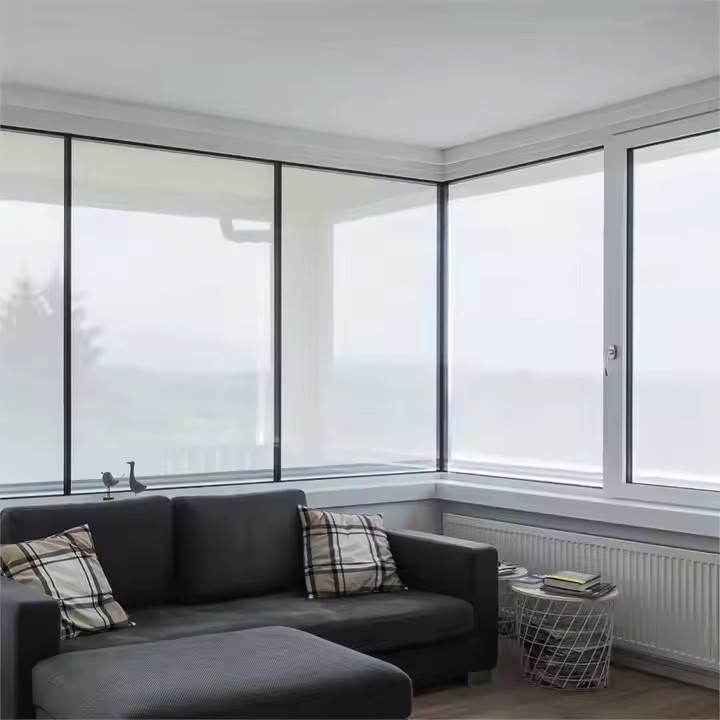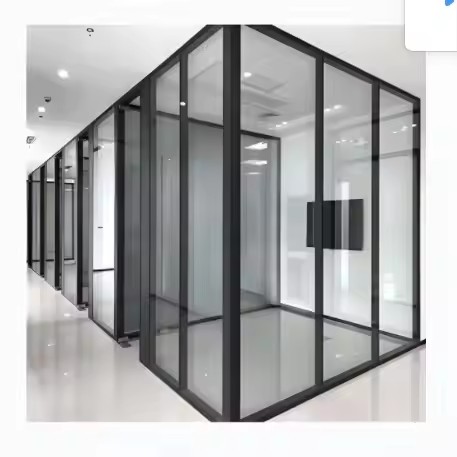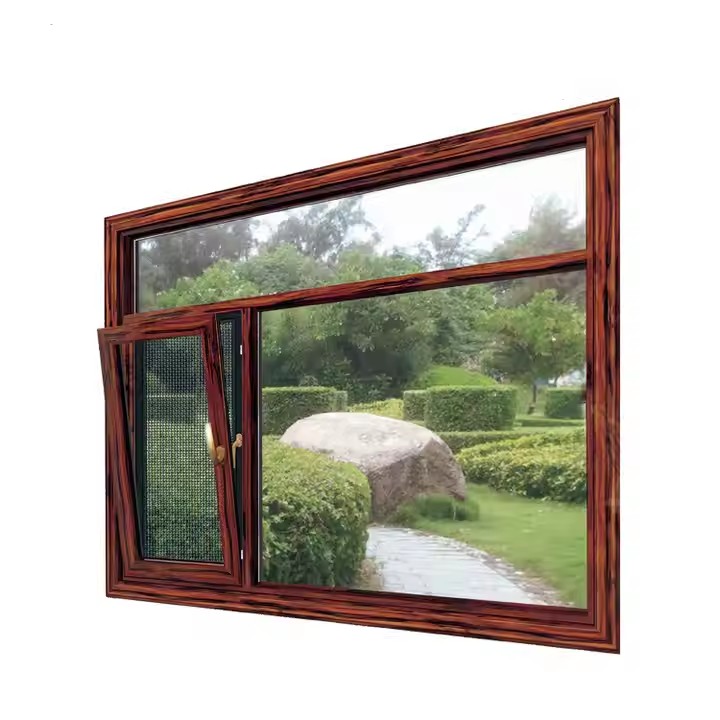I. Style Alignment: Ensuring Material Harmony with the Villa’s Design Language
The materials used for villa doors and windows must align with the architectural style of the building to avoid “material dissonance” that disrupts the overall atmosphere. Different villa styles call for distinct requirements in terms of material, color, and form. The right materials should convey the core spirit of each design style.
(1) European / French Villas: Expressing Elegance Through “Substantial Weight” and “Refined Ornamentation”
European and French villas emphasize romantic elegance. Their doors and windows should reflect a sense of weight and ornamentation, avoiding light or thin materials that would weaken the visual grandeur.
Frame material: Prioritize thermal-break aluminum alloy (wall thickness ≥1.8 mm) or solid wood composite frames (main wood types: teak, walnut, or other hardwoods).

Aluminum alloy frames can be fluorocarbon coated to simulate classic European tones like deep brown or cream white, achieving a soft, non-reflective finish.
Solid wood composites retain the warmth of natural wood grain and, with mortise-and-tenon joinery, deliver the refined texture of European craftsmanship while avoiding warping issues seen in pure solid wood.
Glass and trim: Choose glass with European embossed molding. The moldings, made from color-matched solid wood or aluminum, may feature acanthus or Rococo carvings. With a trim width of 30–50 mm, they balance elegance and proportion. For glass, options like reeded (“long rainbow”) glass combined with frosted etching or wire-embedded double glazing can enhance the romantic atmosphere.
Hardware: Opt for antique bronze or champagne gold copper fittings (handles, hinges, locks) with antique finishing and carved ornamentation that echoes the European aesthetic.
For example, handles can be gracefully curved with baroque engravings, and hinges can be partially concealed yet decoratively patterned—highlighting sophistication through detail.
(2) Modern Chinese Villas: Interpreting Zen Aesthetics Through “Natural Materials” and “Minimal Lines”
Modern Chinese villas pursue a serene and introspective aesthetic. Materials should embody Eastern beauty, emphasizing natural textures and simplicity to convey a sense of balance and quiet elegance.
Frame material: Use solid wood (walnut, red oak, or teak) or aluminum-wood composite frames.
Solid wood frames retain the wood’s natural patterns (e.g., straight walnut grain or red oak cathedral grain) with clear varnish finishes that subtly tint the surface while preserving visible grain, achieving a jade-like warmth.
Aluminum-wood composites combine the best of both worlds—aluminum exterior for weather protection and solid wood interior to harmonize with traditional indoor aesthetics.
Glass and grille design: Choose ultra-clear glass paired with Chinese-style grilles made of solid wood or coated aluminum in dark brown or black tones.
Patterns may include Hui motifs, cracked-ice designs, or simple vertical bars, with spacing between 80–120 mm to maintain openness.
Some panels can use laminated glass embedded with natural fibers (such as bamboo or linen threads), deepening the Oriental charm.
Hardware: Select matte black or dark bronze minimalist fittings, avoiding ornate designs. Handles should be straight or slightly curved, hinge systems concealed, maintaining the integrity of clean lines and the “less is more” principle of modern Chinese style.
(3) Modern Minimalist Villas: Highlighting Sophistication Through “Pure Materials” and “Seamless Design”
Modern minimalist villas focus on simplicity, openness, and seamless transitions. Materials should emphasize purity and precision, conveying an understated yet high-end aesthetic through surface quality and technical finesse.
Frame material: Choose ultra-narrow thermal-break aluminum frames (width ≤50 mm, wall thickness ≥1.6 mm) with matte finishes in black, pearl white, or light gray (fluorocarbon or powder coatings, gloss ≤30°).
These subdued tones prevent reflections and preserve visual calmness.

In premium projects, titanium-zinc panels may be used. Their natural silvery-gray tone develops a patina layer over time, enhancing texture and corrosion resistance—perfectly fitting the minimalist “lasting sophistication” aesthetic.
Glass and configuration: Use large-format Low-E double glazing (single panels up to 5–8 m²) to minimize frame divisions and achieve a “boundaryless” indoor-outdoor view.
Optional laminated glass (clear or light-gray interlayer) improves safety without compromising transparency.
In certain areas, smart frosted glass can balance privacy and modern minimalism with a technological touch.
Hardware: Choose concealed fittings or ultra-slim handles made of matte stainless steel or aerospace-grade aluminum in matching colors.
Handles should be ≤20 mm wide, embedded into the frame for a seamless look.
Hinges can use pivot-style (top and bottom) systems, fully hidden to maintain the flush, integrated aesthetic of minimalist design.
II. Material Texture: Avoid “Cheapness” — Choose “High-Quality Raw Materials”
The overall sense of luxury in a villa’s doors and windows is largely determined by the authentic texture of the materials.
Low-cost options (such as PVC, thin aluminum, or low-grade timber) will immediately diminish the property’s high-end feel. Therefore, materials should possess natural grain, structural stability, and rarity to convey a premium impression.
(1) Wood: Prioritize “Hardwoods” to Showcase Natural Beauty
Wood is ideal for expressing warmth and refinement, particularly in modern Chinese, European, and American-style villas.
High-density hardwoods not only ensure durability but also display elegant natural grain that enhances the tactile and visual depth of villa interiors.

